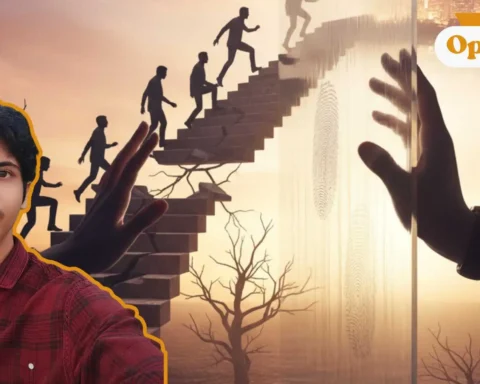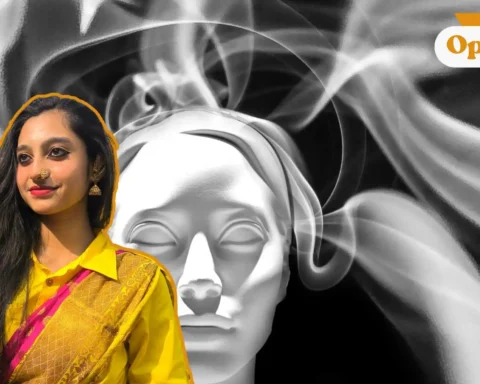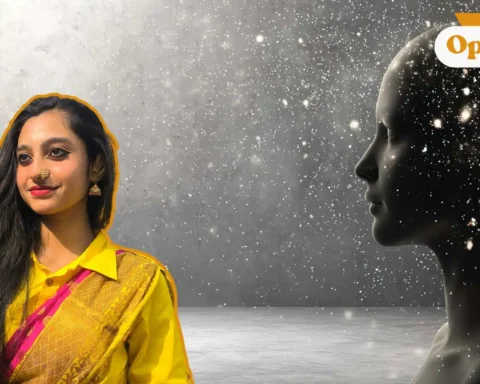In 2024, Colleen Hoover’s popular novel It Ends With Us received a movie adaptation, marking what had been a resurgence in the popularity of Hoover’s books published in the previous decade. The book, as with any popular work of art in the twenty-first century, has received a lot of praise but not without criticism. The greatest of which has been that the book romanticizes abuse, a central theme in the book, which Hoover claims to have experienced throughout her childhood. Much discourse has been had regarding Hoover’s books. However, this fits into a broader discussion of the commercialization of trauma, specifically female trauma, in literature and media.
The Exploration of Female Trauma in Art
In an interview with Complex published in February 2024, American musician Vince Staples satirically stated that he was pro-trauma as it was “the spice of life.”. Trauma is an inevitability of life, and if one were to subscribe to Staples’ school of thought, it is a necessary ingredient too. As such, it is to be expected, with art being a reflection of life that trauma will have a presence in the various forms that art takes.
Female trauma is a unique subsection of trauma as it is segregative based on gender. It is an accepted reality that the patriarchy has done more damage to women and, as such, has created trauma that is unique to the female experience. This trauma either implicitly or explicitly inspires and informs the art created by women. In most instances, this materializes as gendered violence in either domestic abuse, sexual assault or other systematic forms of oppression and their implications on women and girls.
Two good examples in literature are the books The Bell Jar by Sylvia Plath and The Colour Purple by Alice Walker. Written by very different authors and exploring very different forms of trauma. The Colour Purple, set in the early parts of the Twentieth century, deals with sexual abuse suffered by a woman in the segregated American South. It highlights how women in marginalised communities are vulnerable to various forms of violence as well and goes on to examine the long road one takes to recover.
Conversely, the semi-autobiographical book The Bell Jar is an account of the effects of depression and societal pressures purely from a female lens. The book dives into a lot of challenges that young women relate to, from the pressure of one’s immediate environment to conform to expectations and how that is in direct conflict with the desire for individuality to the uncertainty of one’s selfhood and the existential mental toll that it takes.

In visual media, The Handmaid’s Tale, which is a Television show based on Margaret Atwood’s book of the same name, is a dystopian metaphor for the patriarchy. The show is centered around the elimination of female autonomy, and though state-sanctioned rape might seem extreme, it does mirror the ongoing strife between the self-determination of women against traditional customs, governments and judiciary bodies around the world.
At the very heart of both the books and show is the exploration of female trauma, but how they do so is greatly different, in fact, they both tackle wildly different aspects of this trauma, such is the varied female experience. However, as both the authors and showrunners articulate these very different female experiences, it offers catharsis to the women who endure them as well as communicates them in depth to the existing public.
The Exploitation of Female Trauma in Art
It is not a secret that whenever a genre or subject of art becomes popular or draws attention to it, publishers, producers, and studios will aim to make a profit from it. Hip Ho,p particularly the subgenre of gangster rap in The United States, went from being ostracized to heavily marketed primarily because of its rising popularity despite earlier setbacks.
Similarly, when the current wave of feminism hit popular media, Producers and publishers jumped on the trend to produce female-centric films and shows. This had varying degrees of success, Most movies and shows released towards the latter part of the 2010s and early 2020s were poorly received. Some commentators thought the major reason to be the rejection of female politics in film and associated media however, on closer inspection, it was proved to not be the case.
The major problem is that a majority of these shows, books and movies did not actually center around their female characters. Instead, they used the characters and associated trauma as plot devices and did not really provide any depth into the characters or their trauma.
A good example is the 2011 fantasy action Sucker Punch. The film stars five women who plan to escape a mental institution, this is juxtaposed by a fantasy world created by the lead protagonist where she and her friends are highly trained female warriors. Though layered with several aspects of trauma, from sexual to exploitative, the movie only really uses them as backgrounds for action sequences. From the onset, it is clear the movie did not intend to properly address any of the issues related to the trauma suffered by the characters.
This subject matter was the focal point of Arundathi Roy’s essay The Great Indian Rape Trick. The essay is a critique of the 1994 film Bandit Queen which was meant to be a true story of Phoolan Devi, a bandit turned politician in later life but reduces her entire story to the multiple times she was raped and her eventual revenge.
Conclusion
The commodification of female trauma in literature and media reflects a troubling trend where deeply personal and societal struggles are reduced to mere plot devices for profit or entertainment. While certain works like the aforementioned The Bell Jar, The Color Purple, and The Handmaid’s Tale offer nuanced explorations of trauma, others exploit these experiences without meaningful engagement. This superficial treatment undermines the complexity of female resilience and recovery, perpetuating harmful stereotypes.
To foster authentic representation, creators must prioritize depth and empathy of the female experience. The importance of empathy cannot be overstated, the clear difference in the presentation of trauma done by men and women creators is indicative of the former not grasping the weight or importance of the female trauma. This is not to say that female experience should only be presented in art by women creators or that only women should write female-led movies and books, but for a writer or other creator to do so, it is imperative that they understand women beyond the headlines.

Let us know your thoughts in the comments below. If you have burning thoughts or opinions to express, please feel free to reach out to us at larra@globalindiannetwork.com.









